How To Use A Multimeter To Test Voltage Of Live Wires
Voltage is the force or pressure at which current moves through a wire or electrical circuit.
A live or hot wire, on the other hand, is simply a wire with electric current running through it.
These wires may have high voltages, meaning they could be fatal when a human comes in contact with an exposed part of them. This is why it is important to know the state of exposed wires.
Do you see an exposed wire in your home or premises? Do you want to know whether it is hot, or whether the amount of voltage it carries is fatally dangerous?
If your answer to these is yes, you are at the right place.
We have prepared a step-by-step guide on how to use a multimeter to test voltage of live wires.
Let’s get right in.
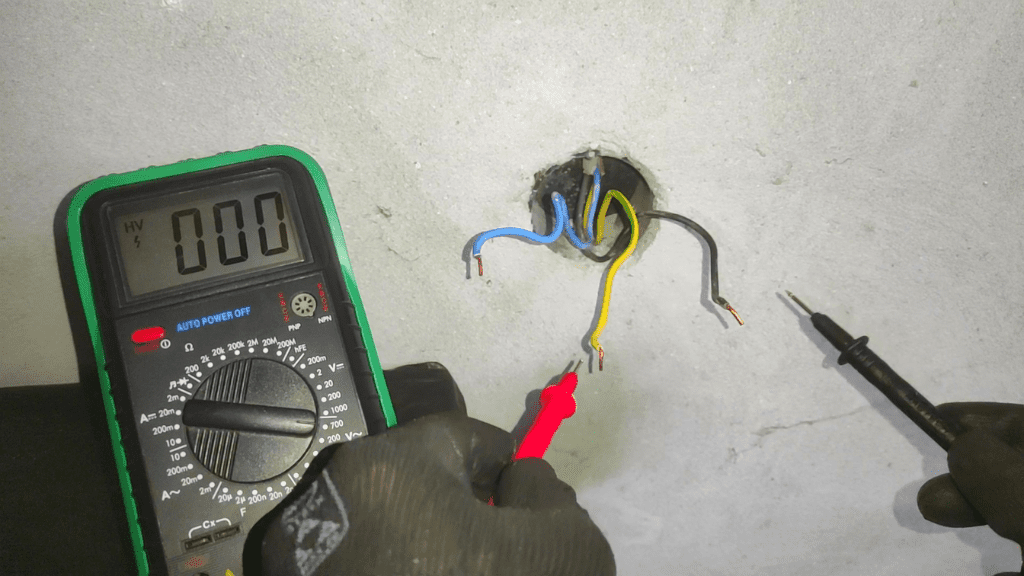
Tools Required To Test Voltage Of Live Wires
The tools you will use to test voltage in a hot wire include
- Multimeter
- Insulated Gloves
- Safety Goggles
The multimeter is the key device in this situation.
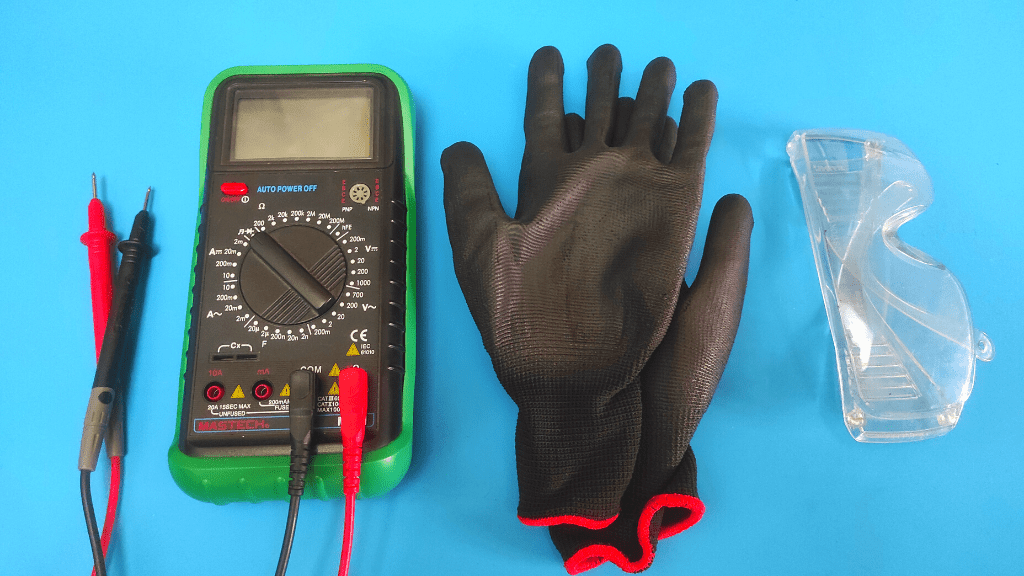
How To Use A Multimeter To Test Voltage Of Live Wires
Set the multimeter to AC or DC voltage, place the red probe on an exposed part of the live wire in the fixture, and place the black probe on a metal surface nearby. If you are testing live wire in a wall socket, for instance, the multimeter is expected to present a value between 120V and 240V.
There’s a whole lot more to know about measuring voltage in a live wire and we will explain each step in detail now.
- Wear Protective Gear
Remember that live wires have power flowing through them. You don’t want to get electrocuted, so it is important you adhere to certain safety precautions.
Wear rubber insulated gloves and safety glasses. You also make sure the meter leads don’t make contact with each other during the testing process to avoid damaging the multimeter.

- Plug The Probes Into The Multimeter
The meter has three ports into which the probes are plugged. These are the COM port, the VΩmA port, and the 10ADC port. The COM and VΩmA ports are important to our test, as the 10ADC port is only used to test amperage with the use of the multimeter.
Plug the black negative multimeter probe in the “COM” port and plug the red positive multimeter probe in the “VΩmA” port.
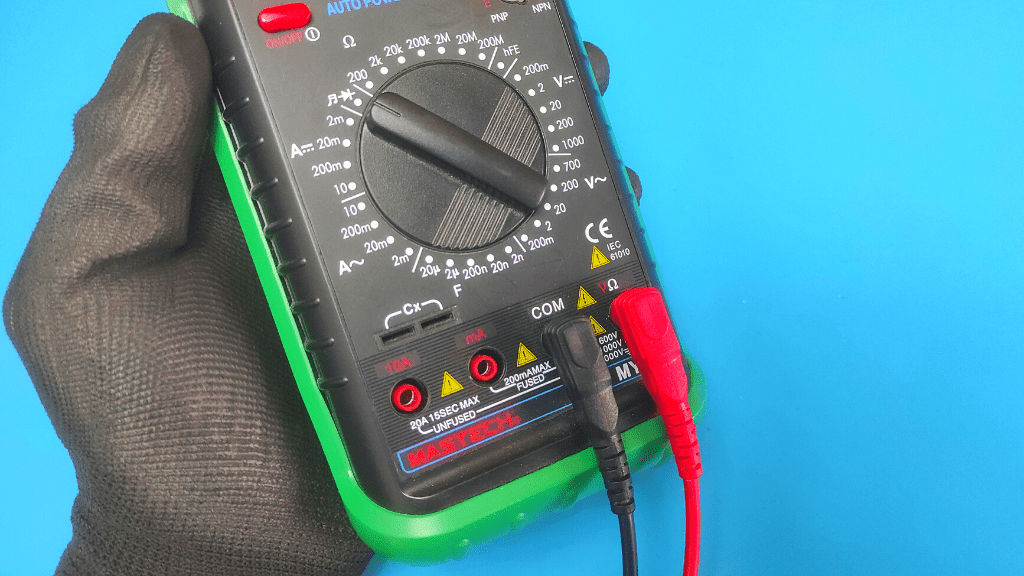
- Set The Multimeter To AC Voltage
There are two types of power that flow through an electrical circuit, which are alternating current(AC) and direct current (DC).
AC flows in both directions within the electrical circuit and is usually seen in homes, offices, or other types of residences that rely on a transformer. DC, on the other hand, flows in only one direction and is seen within devices that rely on batteries.
Depending on what you are testing, you either set the meter to measure AC voltage or DC voltage. AC typically flows through live wires.
AC voltage is represented by “VAC” or “V~” on the multimeter and typically has two ranges; 200VAC and 600VAC. You set the multimeter tool to the closest higher range you want to measure.

For instance, if you want to test 120 volts from hot wires, you set the multimeter to the 200VAC range, and if you want to test 220VAC from wires, you set the multimeter to the 600VAC range.
DC voltage is represented by V– (with three dots) and typically has up to 6 ranges; 2mV, 200mV, 2V, 20V, 200V, and 600V. Just like with AC voltage, you set the multimeter to the closest higher range. “mV” represents millivolts.
- Place Multimeter Probes On Ground And Live Wire
Now, to the main part of the test. Place the positive multimeter lead on an exposed part of your hot wire and place the negative lead on ground wire.
Additionally, if you don’t know which of your wires is live, you may check out our guide on identifying a hot wire using a multimeter.
Alternatively, you may also place the negative lead on the neutral wire and then place the red lead on the hot wire.
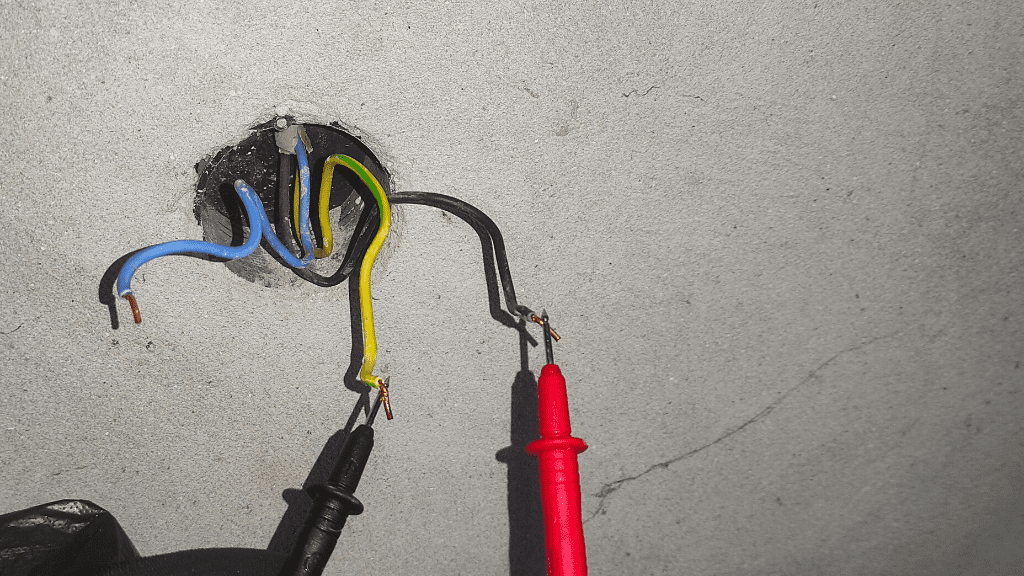
- Evaluate Results
The interpretation of your result wholly depends on the device or electrical component you are testing a hot wire from.
Nonetheless, the general agreement is that if the multimeter shows you a reading of “0” (zero), then there is no voltage in the hot wire. This may also mean the multimeter leads are not making a proper connection at the positions they are kept.
Also, if the voltage value from the multimeter is significantly different from the expected voltage reading, then there is a problem with the electric component.
For instance, if you are measuring the voltage of a live wire from a 12V DC battery, the multimeter is expected to read about 12V (between 11V and 13V).
In the case of a wall socket with a 120VAC supply, the multimeter is expected to read between 110V and 120V.
When you check the multimeter, any reading significantly out of these ranges means the voltage in your hot wire is bad. There are also other multimeter results to take note of.
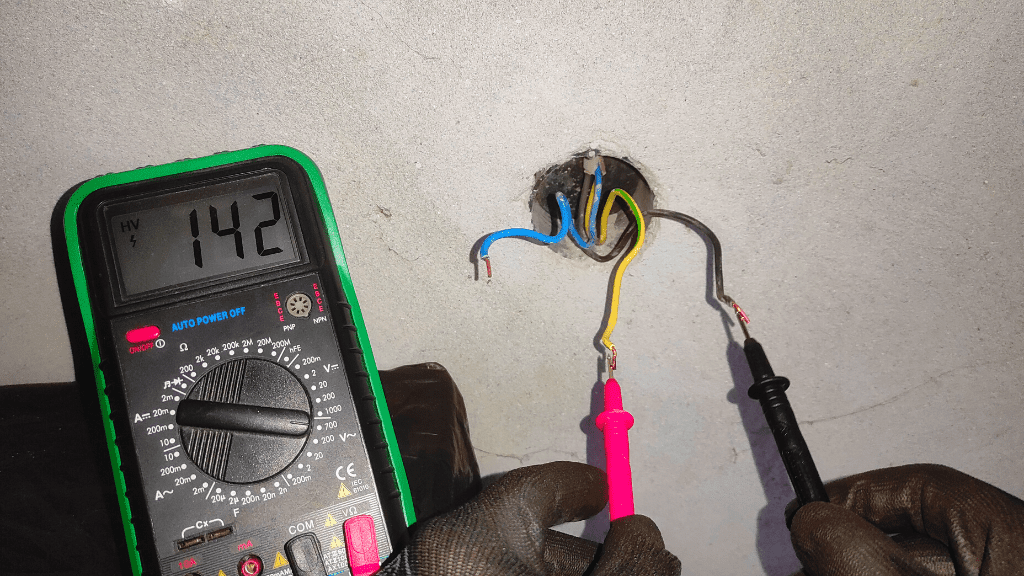
An “OL” reading from the multimeter represents overload, meaning the voltage in the hot wire is higher than the range the multimeter is set to.
Finally, a negative value on the multimeter means the placement of your probes has been reversed. This is when the positive lead is connected to ground instead of the live wire, and the negative lead is placed on the live wire instead of ground.
Make sure all connections are in the right positions.
You can also check out our video guide about testing the voltage of live wires:
Conclusion
Testing voltage in a live wire is a fairly simple task compared to other tests you may run with the multimeter.
Nonetheless, since you may be dealing with high levels of power, be sure to wear safety equipment before proceeding to check or measure the voltage in live wires.
Frequently Asked Questions
How Do You Use A Multimeter To Check If A Wire Is Live?
Set the multimeter to AC/DC voltage, place the red probe on an exposed part of the wire, and place the black probe on a metal surface. The wire is live if you get a value from the multimeter.
Can Voltage Be Read On A Live Current?
Yes, you can use a multimeter to measure the voltage in a live electrical circuit. This is different when it comes to resistance, as you can’t measure resistance in a live circuit.

Author
Alex Klein is an electrical engineer with more than 15 years of expertise. He is the host of the Electro University YouTube channel, which has thousands of subscribers.
